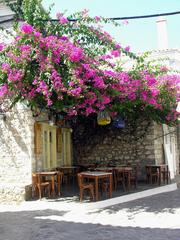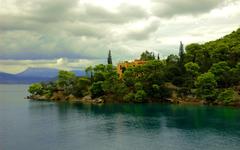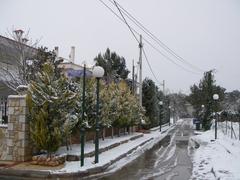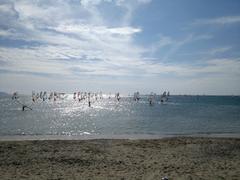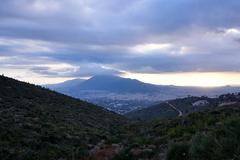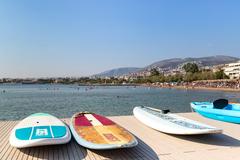
Comprehensive Guide to Visiting Attica Region, Decentralized Administration of Attica, Greece
Published Date: 14/08/2024
Captivating Introduction
Welcome to the enchanting Attica region, where ancient history and modern vibrancy coexist in a harmonious dance. Imagine walking through lands that have seen the rise and fall of powerful empires, the birth of democracy, and the whispers of philosophers whose ideas still resonate today. Attica, particularly Athens, is often considered the cradle of Western civilization, a region that has profoundly influenced philosophy, politics, and the arts (Britannica). Picture yourself exploring the ruins of the Acropolis, standing where Socrates once debated, or gazing at the serene beauty of the Temple of Poseidon at Cape Sounion, where the Aegean Sea meets the sky (Chasing the Donkey). This guide is your ticket to uncovering the rich tapestry of history, culture, and natural beauty that makes Attica an endlessly fascinating destination. From bustling urban centers to tranquil coastal retreats, Attica offers a diverse array of experiences that cater to every type of traveler. So, lace up your walking shoes, grab your sense of adventure, and let’s embark on a journey through time and space, right here in the heart of Greece.
Table of Contents
- ## Historical Significance of the Attica Region
- ## Modern Administration of the Attica Region
- ### Discovering Attica: A Region of Endless Surprises
- ### Tourism Development Initiatives
- ### Infrastructure Improvements
- ### Cultural and Historical Preservation
- ### Health and Wellness Tourism
- ### Gastronomy and Vinitourism
- ### Prominent Destinations in Attica
- ### Islands of Attica
- ### Insider Tips and Local Secrets
- ## Discover the Wonders of the Attica Region
- ### The Acropolis and Parthenon
- ### Temple of Olympian Zeus
- ### Cape Sounion and the Temple of Poseidon
- ### Ancient Agora of Athens
- ### National Archaeological Museum
- ### Piraeus
- ### Glyfada and Vouliagmeni
- ### Eleusis (Elefsina)
- ### Rhamnous
- ### Vravrona (Brauron)
- ### Monastiraki Flea Market
- ### Delphi
- ### Meteora Monasteries
- ### Practical Tips for Visitors
Historical Significance of the Attica Region
Ancient History
Picture yourself standing on the sun-kissed lands of Attica, where every stone whispers tales of ancient glory. This isn’t just any region in Greece; it’s the very cradle of Western civilization, where Athens, the heart of Attica, flourished as one of the most influential city-states in history. Attica’s strategic location at the southernmost tip of the Balkan Peninsula, bordered by the sparkling Aegean Sea, made it a coveted jewel in ancient times (Britannica).
Mycenaean Period
Imagine autonomous agricultural societies thriving in Attica during the Mycenaean period. Picture Marathon, Rafina, Nea Makri, and other key settlements bustling with life. Their legacy endures in the ruins scattered across the region, waiting for you to explore (Wikipedia).
Classical Period
Fast forward to the classical period, where Attica’s historical significance soared to its zenith. By 700 BC, thanks to the legendary King Theseus, Athens unified the region, becoming a powerhouse of politics, philosophy, art, and science (HistoryRise). Athens wasn’t just any city; it was the birthplace of democracy and home to philosophical giants like Socrates, Plato, and Aristotle. Their ideas still shape our world today (Greeka).
Key Historical Sites
Acropolis of Athens
Ever dreamed of walking among the gods? The Acropolis of Athens, perched majestically above the city, is your chance. Marvel at the Parthenon, the Erechtheion, and the Temple of Athena Nike, masterpieces of classical architecture offering jaw-dropping views (Chasing the Donkey).
Temple of Poseidon at Cape Sounion
For a divine seaside experience, visit the Temple of Poseidon at Cape Sounion. Built in the 5th century BC, this temple dedicated to the god of the sea offers breathtaking views of the Aegean, making it a must-see (Greeka).
Eleusis
Dive into the mysteries of Eleusis, an ancient religious center. Explore the Sanctuary of Demeter and Persephone, where secret rites unfolded annually, offering a glimpse into the spiritual life of ancient Greece (Greece Travel Secrets).
Amphiareion of Oropos
Discover the hidden gem of the Amphiareion of Oropos, dedicated to the chthonic hero and healer Amphiaraus. This serene sanctuary, with its temple and theater, provides a peaceful escape into history (Greece Travel Secrets).
Historical Events
Persian Wars
Remember the Battle of Marathon? In 490 BC, Athenian warriors, led by Miltiades, triumphed over the Persians in a legendary clash. Visit the battle site near Marathon and feel the echoes of history (Wikipedia).
Peloponnesian War
The Peloponnesian War (431-404 BC) was a tumultuous chapter in Attica’s history, pitting Athens against Sparta. The conflict reshaped the region, leaving a profound impact on its political and social landscape (Greeka).
Modern Historical Significance
19th and 20th Centuries
In the mid-19th century, Athens became the capital of modern Greece, sparking a wave of development in Attica. Ports, highways, and factories sprang up, transforming the region into a vibrant economic and cultural hub (Greeka).
Recent Events
The 2024 Attica wildfires were a stark reminder of the region’s ongoing challenges. These devastating fires affected several areas, including Marathon and Mount Penteli, underscoring the need for resilience and recovery (Wikipedia).
Visitor Tips
Best Time to Visit
Spring and autumn are the sweet spots for visiting Attica. The weather is perfect, and the crowds are thinner, making for a more enjoyable experience.
Transportation
Getting around Attica is a breeze, thanks to its well-connected public transportation system. Buses, trams, and the metro in Athens make exploring easy. For more remote sites, consider renting a car.
Guided Tours
For an insider’s perspective, join a guided tour. Expert guides can provide fascinating insights into Attica’s history, architecture, and culture.
Accommodation
From luxury hotels in Athens to cozy guesthouses in smaller towns, Attica has accommodation options for every traveler. Book ahead, especially during peak tourist seasons.
Conclusion
Attica’s rich historical tapestry, from ancient glory to modern resilience, makes it a captivating destination. Whether you’re exploring the ancient ruins of the Acropolis or the tranquil sanctuary of the Amphiareion, Attica promises an unforgettable journey through time. And don’t forget to download Audiala, your perfect travel companion, offering beautifully crafted audio guides to unlock the secrets and stories of this ancient land. Embark on an adventure and let Attica’s history come alive in your hands.
Modern Administration of the Attica Region
Discovering Attica: A Region of Endless Surprises
Tourism Development Initiatives
Welcome to Attica, where history and modernity dance in a seamless waltz! Under the vibrant leadership of George Patoulis, the region has flourished as a top travel destination, even weathering the storm of a global pandemic. With a sprinkle of magic, the administration has unveiled a master plan to amplify Attica’s allure. Picture this: investments pouring into cultural, health, gastronomic, and even vinitourism treasures (Incredible Greece).
Infrastructure Improvements
Ever dreamt of sailing through sapphire waters? Attica is your dream come true! The administration has rolled out the red carpet with state-of-the-art marinas, making Greece the fourth most coveted haven for seaborne escapades (Incredible Greece). And don’t get us started on the slick roads, public transport galore, and chic tourist facilities. Your journey here will be as smooth as a glass of fine Greek wine.
Cultural and Historical Preservation
Attica isn’t just a region; it’s an open-air museum! Imagine walking through history with every step. From the ancient Temple of Aphaia on Aegina to the archaeological marvel of Kolona, the administration is on a mission to preserve these timeless gems. Ready to feel the pulse of ancient civilizations? (Incredible Greece).
Health and Wellness Tourism
Calling all health enthusiasts! Attica’s wellness retreats and medical tourism facilities are the perfect antidote to modern life’s hustle. The administration’s efforts mean top-notch services are just a spa day away, making this region the go-to for rejuvenation and relaxation.
Gastronomy and Vinitourism
Foodies, rejoice! Attica’s culinary scene is a gastronomic playground. Think traditional Greek tavernas, haute cuisine, and wine tours that tickle your taste buds. Local producers and food festivals? Yes, please! Savor the flavors of Attica, one delicious bite at a time (Incredible Greece).
Prominent Destinations in Attica
Saronikos
Ah, Saronikos! This gem combines history, culture, and jaw-dropping landscapes. Rocky cliffs meet lush greenery and the serene sea. It’s not just a destination; it’s an experience filled with culinary delights and warm hospitality (Incredible Greece).
Piraeus
Piraeus, the heartbeat of Greece’s maritime soul! This bustling port city offers everything from vibrant neighborhoods to chic shopping and seaside fun. Pasalimani’s nightlife? Pure magic (Incredible Greece).
Methana
Step into Methana, a green paradise on the Troizina peninsula. It’s where tranquility meets natural splendor. Perfect for those craving a serene escape (Incredible Greece).
Islands of Attica
Salamina, Poros, and Spetses
Just a hop, skip, and a jump from Athens, these Saronic islands are your ticket to peaceful getaways. Think organized beaches, delicious food, and rich history (Incredible Greece).
Hydra
Hydra, the island where cosmopolitan vibes meet naval history. Dive into crystal-clear waters and feast on culinary masterpieces. A blend of luxury and tradition awaits (Incredible Greece).
Kythira
Known as Aphrodite’s island, Kythira sits between the Aegean and Ionian Seas. Picture-postcard churches and villages blend seamlessly with natural beauty (Incredible Greece).
Aegina
Just an hour from Piraeus, Aegina is the heart of the Saronic Gulf. With ancient temples, archaeological wonders, and mouthwatering local products, it’s a year-round haven (Incredible Greece).
Agistri
Tiny yet mighty, Agistri offers serene landscapes and thrilling water sports. It’s the perfect blend of relaxation and adventure, just a stone’s throw from Piraeus (Incredible Greece).
Insider Tips and Local Secrets
- Best Time to Visit: Spring (April to June) and fall (September to November) are prime. Mild weather, fewer crowds—bliss!
- Transportation: Public transit is top-notch, but renting a car gives you the freedom to explore at your own pace.
- Accommodation: From luxe hotels to cozy hostels, book ahead, especially during peak times.
- Local Cuisine: Souvlaki, moussaka, fresh seafood—try them all! Pair with local wines for a true taste of Attica.
- Safety: Generally safe, but keep an eye on your belongings and avoid poorly lit areas at night.
Interactive Challenge: The Attica Quest
Are you up for a quest? Discover hidden gems and local secrets with our interactive Attica Quest. Find clues, unlock secrets, and become an honorary Athenian adventurer!
Cultural Context and Etiquette
- Greeting: A friendly ‘Yassou!’ (Hello!) goes a long way.
- Dining: Sharing plates is common—don’t be shy!
- Dress Code: Casual but respectful, especially in religious sites.
Fun Facts and Myth Busting
Did you know Attica is home to the world’s first democracy? And no, Greek yogurt isn’t just a myth—it’s a breakfast staple!
Call to Action
Ready to embark on your Attican adventure? Download the Audiala app for tailored itineraries, insider tips, and more. Your unforgettable journey starts here!
Discover the Wonders of the Attica Region
Welcome to Attica, the cradle of Western civilization and a treasure trove of ancient wonders! From the iconic Acropolis to hidden coastal gems, this region offers a journey through history, culture, and breathtaking landscapes. Let’s dive into the marvels of Attica as if guided by a local friend with a penchant for storytelling and humor.
The Acropolis and Parthenon
Picture this: You’re standing on a rocky outcrop, the city of Athens sprawled out below you. The scent of olive trees fills the air as you gaze upon the majestic Parthenon, a temple dedicated to Athena, the city’s patron goddess. Built in the 5th century BCE, this UNESCO World Heritage Site is not just a marvel of architecture but a symbol of ancient Greek civilization. Don’t miss exploring the Propylaea, the Erechtheion, and the Temple of Athena Nike – each offering a piece of history and a story waiting to be told.
Temple of Olympian Zeus
Just a stone’s throw from the Acropolis, you’ll find the remnants of the Temple of Olympian Zeus. Imagine walking among the colossal columns that once made up Greece’s largest temple, dedicated to the king of the Olympian gods. Although only a few columns remain, the sheer scale of the site speaks volumes about the grandeur of ancient Greek religion and architecture. Fun fact: Construction began in the 6th century BCE and wasn’t completed until over 600 years later during Emperor Hadrian’s reign!
Cape Sounion and the Temple of Poseidon
Venture to the southern tip of Attica and be greeted by the stunning coastal views of Cape Sounion. Here stands the Temple of Poseidon, perched high above the Aegean Sea. Built in the 5th century BCE, this temple offers more than just historical significance – it’s a spot where the sea breeze whispers ancient secrets, and sunsets paint the sky in hues of gold and crimson. Don’t forget to keep an eye out for inscriptions left by ancient travelers!
Ancient Agora of Athens
Step into the heart of ancient Athenian life at the Ancient Agora. This bustling hub once thrived with political, commercial, and social activity. Imagine the clamor of merchants, philosophers, and citizens as you explore the well-preserved Temple of Hephaestus and the reconstructed Stoa of Attalos, which now houses the Agora Museum. Here, artifacts tell tales of daily life, from pottery to political decrees.
National Archaeological Museum
Prepare to be awed by the treasures within the National Archaeological Museum. As Greece’s largest and one of the world’s most important archaeological museums, it boasts artifacts spanning from prehistory to late antiquity. Marvel at the Mask of Agamemnon, ponder the mysteries of the Antikythera mechanism, and admire an array of sculptures, pottery, and jewelry that offer a glimpse into the ancient world.
Piraeus
Piraeus, Athens’ bustling port city, is a blend of maritime history and modern vibrancy. Explore the Archaeological Museum of Piraeus and the Hellenic Maritime Museum, where Greece’s naval past comes to life. Stroll along the picturesque Mikrolimano harbor, lined with seafood tavernas offering fresh local cuisine. The scent of grilled octopus and the sound of clinking glasses create a sensory symphony you won’t want to miss.
Glyfada and Vouliagmeni
For a coastal retreat, head to Glyfada and Vouliagmeni. Glyfada is a hotspot for upscale shopping, dining, and nightlife, while Vouliagmeni is famous for its natural thermal lake, believed to have therapeutic properties. Whether you’re soaking in the warm waters of Lake Vouliagmeni or enjoying water sports on the sandy beaches, these towns offer relaxation and adventure in equal measure.
Eleusis (Elefsina)
Journey northwest ofAthens to Eleusis, an ancient city known for the Eleusinian Mysteries, one of Greece’s most important religious rites. The archaeological site features the remains of the Telesterion, a grand hall used for initiation ceremonies. As the European Capital of Culture for 2024, Eleusis also promises a vibrant array of cultural events and activities, blending ancient tradition with contemporary creativity.
Rhamnous
Discover the ancient fortified city of Rhamnous in northeastern Attica. Known for its sanctuary of Nemesis, the goddess of retribution, Rhamnous offers a unique insight into the religious and military aspects of ancient Greek life. Wander through the remains of the acropolis, fortifications, and various temples, and let the echoes of history guide your journey.
Vravrona (Brauron)
Near the eastern coast of Attica lies Vravrona, home to the sanctuary of Artemis Brauronia. This archaeological site includes the remains of a temple, a stoa, and other structures dedicated to Artemis, the goddess of the hunt. The small museum on-site displays artifacts that bring the area’s history to life. Picture ancient rituals and ceremonies as you explore this serene location.
Monastiraki Flea Market
Monastiraki, a historic neighborhood in Athens, is a vibrant mix of past and present. Wander through the bustling flea market, where narrow streets are lined with shops selling antiques, souvenirs, and more. Amidst the lively atmosphere, you’ll stumble upon important historical sites like the Ancient Agora and the Roman Agora. Take a break in Monastiraki Square, where cafes and restaurants buzz with local flavor and energy.
Delphi
Although not within Attica, Delphi is a must-visit day trip from Athens. This ancient sanctuary, dedicated to Apollo, was once considered the center of the world. Explore the Temple of Apollo, the ancient theater, and the Delphi Archaeological Museum. Each step here feels like a journey through myth and history, where the oracle’s whispers once guided kings and warriors alike.
Meteora Monasteries
Another enchanting day trip from Athens leads to the Meteora monasteries in central Greece. Perched atop towering rock formations, these monasteries offer stunning views and a serene retreat from the modern world. Six of the original 24 monasteries are still active, providing a glimpse into monastic life and the region’s spiritual history.
Practical Tips for Visitors
- Transportation: Fly into Athens International Airport (ATH), then hop in a taxi, bus, or train to your destination. Public transportation within Athens is efficient and affordable, with buses, trams, and the metro at your service.
- Weather: Attica enjoys a Mediterranean climate with hot, dry summers and mild, wet winters. The best times to visit are spring (April to June) and autumn (September to October), when the weather is pleasant, and the crowds are thinner.
- Safety: While Attica is generally safe for tourists, keep an eye on your belongings and avoid poorly lit areas at night. Standard precautions go a long way!
- Local Cuisine: Indulge in local delicacies like souvlaki, moussaka, and loukoumades. Coastal towns like Piraeus and Glyfada are renowned for their fresh seafood – think grilled octopus and fried calamari!
By exploring these attractions and following practical tips, you’ll uncover the rich history, culture, and natural beauty that make the Attica region a captivating destination. Ready for an adventure? Download the Audiala app for beautifully crafted audio guides that reveal hidden gems and expert insights, making your journey even more enriching. Happy exploring!
Call to Action
As we wrap up our journey through the captivating Attica region, it’s clear that this destination is a living, breathing museum of history, culture, and natural beauty. Whether you’ve been enchanted by the ancient ruins of the Acropolis, captivated by the coastal allure of Cape Sounion, or intrigued by the modern vibrancy of Athens and its surrounding areas, Attica offers a unique blend of experiences that leave a lasting impression. The region’s commitment to preserving its rich heritage while embracing modernity ensures that every visit is as educational as it is enjoyable (Greeka). The ongoing efforts to develop tourism, improve infrastructure, and promote cultural preservation make Attica not just a historical treasure but also a thriving, dynamic region. As you plan your visit, remember that the best experiences often lie off the beaten path. Explore the hidden gems, engage with the local culture, and savor every moment. And don’t forget to download the Audiala app—your perfect travel companion that offers beautifully crafted audio guides to unlock the secrets and stories of this ancient land. Your adventure in Attica is just beginning, and we can’t wait for you to discover all that this incredible region has to offer.


